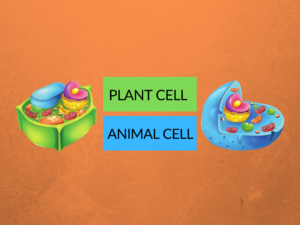Understanding the Differences: Repolarization, Depolarization, and Hyperpolarizing
Are you curious about the intricate workings of the human body? Specifically, the electrochemical processes that occur within our cells? In this article, we will delve into the concepts of repolarization, depolarization, and hyperpolarizing, exploring their definitions, examples, uses, and most importantly, the differences between them. So, let’s jump right in!
What is Repolarization?
Repolarization refers to the process in which the membrane potential of a cell returns to its resting state after depolarization. This occurs through the movement of ions across the cell membrane, balancing the charge and preparing the cell for subsequent depolarization. It is a crucial part of the action potential cycle in nerve and muscle cells.
Examples of Repolarization
One of the common examples of repolarization can be observed in cardiac muscle cells. After depolarization, which triggers the contraction of the heart, repolarization allows the heart to relax and prepare for the next beat.
Uses of Repolarization
Repolarization plays a fundamental role in the proper function of nerve cells, allowing them to transmit electrical signals effectively. Additionally, it ensures the rhythmic contractions of the heart, facilitating its pumping action.
What is Depolarization?
Depolarization occurs when the membrane potential of a cell becomes more positive, moving away from its resting state. This typically happens when positively charged ions, such as sodium ions, enter the cell, causing a shift in the balance of charge. Depolarization plays a vital role in the generation of electrical impulses in cells.
Examples of Depolarization
An example of depolarization is observed during the firing of a neuron. When a neurotransmitter binds to the receptor on the cell membrane, sodium ions rush into the cell, causing depolarization. This allows the electrical signal to propagate along the length of the neuron.
Uses of Depolarization
Depolarization is essential for various physiological processes, including muscle contraction, nerve impulse transmission, and sensory perception. It enables the communication between cells and facilitates the coordination of bodily functions.
What is Hyperpolarizing?
Hyperpolarizing, also known as membrane hyperpolarization, is the opposite of depolarization. It is the process in which the membrane potential of a cell becomes more negative than its resting state. This occurs when negatively charged ions, like chloride ions, enter or positively charged ions leave the cell, creating an increased electrical gradient.
Examples of Hyperpolarizing
One example of hyperpolarizing can be seen in the response of neurons to inhibitory signals. When inhibitory neurotransmitters, such as gamma-aminobutyric acid (GABA), bind to receptors on the cell membrane, chloride ions enter the cell, causing hyperpolarization. This inhibits the firing of action potentials, reducing the excitability of the neuron.
Uses of Hyperpolarizing
Hyperpolarizing is essential in maintaining the balance and stability of cells. It helps regulate the firing threshold of neurons and prevents excessive excitability. Moreover, it plays a critical role in sensory perception and the control of muscle contractions.
Differences between Repolarization, Depolarization, and Hyperpolarizing
| Difference Area | Repolarization/Depolarization | Hyperpolarizing |
|---|---|---|
| Definition | The return of cell membrane potential to resting state after depolarization. | The membrane potential becomes more negative than its resting state. |
| Examples | Cardiac muscle cell repolarization | Response of neurons to inhibitory signals |
| Uses | Prepares cells for subsequent depolarization; facilitates rhythmic contractions of the heart | Regulates neuronal firing threshold; controls muscle contractions; ensures sensory perception |
| Ion Movements | Movement of various ions across the cell membrane, restoring balance | Entry of negatively charged ions or exit of positively charged ions |
| Effect on Membrane Potential | Returning membrane potential to resting state | Making the membrane potential more negative than resting state |
| Role in Impulse Transmission | Enables efficient transmission of electrical signals | Regulates and inhibits the firing of action potentials |
| Physiological Significance | Vital for nerve cell function and heart contractions | Maintains cell balance and stability; controls excitability |
| Effect on Cell Excitability | Allows cells to become ready for subsequent depolarization | Reduces cell excitability and firing threshold |
| Ion Species Involved | Sodium, potassium, and calcium ions | Chloride and potassium ions |
| Electrical Gradient Shift | Shifting from positive to negative | Increasing the negative membrane potential |
Conclusion
In summary, repolarization, depolarization, and hyperpolarizing are integral processes in cellular function. Repolarization restores the cell’s membrane potential to its resting state after depolarization, allowing for subsequent electrical signaling. Depolarization leads to a more positive membrane potential, facilitating impulse transmission and communication between cells. Hyperpolarizing, on the other hand, creates a more negative membrane potential, regulating cell excitability and ensuring stability.
Knowledge Check: Quiz
1. Which process refers to the return of cell membrane potential to the resting state after depolarization?
a) Repolarization
b) Depolarization
c) Hyperpolarizing
Answer: a) Repolarization
2. In which type of cells does repolarization allow the heart to relax and prepare for the next beat?
a) Cardiac muscle cells
b) Neurons
c) Smooth muscle cells
Answer: a) Cardiac muscle cells
[…] (Continue with more questions)Related Topics
If you found this article on repolarization, depolarization, and hyperpolarizing interesting, you may also be interested in the following related topics:


